#social realism




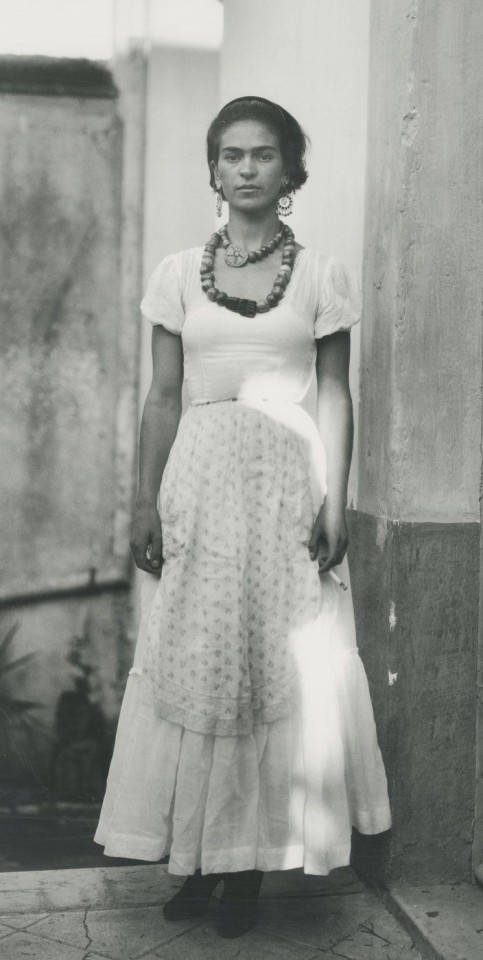





Magdalena Carmen Frida Kahlo y Calderón
6 July 1907-13 July 1954 (aged 47)
Coyoacán, Mexico City, Mexico
Periods: Naive art, Modern art, Surrealism, Magical realism, Symbolism, Primitivism, Naturalism, Social realism, Cubism
Magdalena Carmen Frida Kahlo y Calderón was a Mexican painter known for her many portraits, self-portrait and works inspired by the nature and artifacts of Mexico. Inspired by the country popular culture, she employed a naive folk art style to explore questions of identity, postcolonialism, gender, class, and race in Mexican society.
Her paintings often had strong autobiographical elements and mixed realism with fantasy. In addition to belonging to the post-revolutionary Mexicayotl movement, which sought to define a Mexican identity, Kahlo has been described as a surrealist or magical realist. She is known for painting about her experience chronic pain.
Ironopolis by Glen James Brown: Book Review
Ironopolis by Glen James Brown: Book Review
It’s grim up north … actually it’s not entirely. There is a lot of beauty in the north but as Glen James Brown’s debut novel illustrates there is a bleakness to that beauty – the north has a shadow self and certain areas dwell in the shade that casts. Places such as the Burn Estate, the central location of Ironopolis.This is not a new book. It first hit the shelves in 2018, so it isn’t an old…

Herman Heijenbrock - Early 20th century Industrial landscapes (for those who still have doubts about climate change).
Post link
Cannes Hidden Gem: Speculative Sci-Fi Gets the Social Realist Treatment in ‘Plan 75’
Shocked by a dwindling sense of empathy in her native Japan, director Chie Hayakawa imagines a trenchant scenario in which the government coaxes the elderly into voluntary euthanasia to address the country’s aging population.

When Japanese filmmaker Chie Hayakawa returned to Tokyo in 2008 after 10 years of living in New York, she saw her home country through fresh eyes — and it wasn’t what she remembered.
“I was surprised by how intolerant Japan had become,” she says. “There was this new idea of ‘self-responsibility’ that was being talked about everywhere, and the implication seemed to be that the marginalized should find a way to fend for themselves.”
Then, in 2016, one of the worst crimes in Japanese modern history occurred: A 26-year-old man went on a stabbing spree in a care facility for the disabled north of Tokyo, killing 19 and severely injuring 26 others. The killer justified his actions with a shocking string of statements, arguing for a world where the severely disabled could be euthanized to “ease the burden” on their families and society at large.
“I was enraged and thought, if Japan were to accelerate down this path of intolerance, what would it look like?” Hayakawa says. Her conclusion was Plan 75.
Hayakawa’s debut feature, expanded from a 2018 short, imagines a future Japan in which the government has introduced a policy offering all citizens above the age of 75 with an all-expenses-paid voluntary euthanasia service. The program is aggressively marketed to Japan’s elderly as a responsible way to ensure that they don’t become a burden on those around them, and instead help the country address its economically disadvantageous demographics. (Japan is by far the world’s oldest nation, with more than 29 percent of the population 65 or older, compared with 17 percent in the U.S. Facing spiraling budget deficits, the government recently introduced policies to encourage delayed retirement and to trim the country’s relatively generous social safety net.)
Hayakawa says she interviewed 15 elderly Japanese women of various background as research during the film’s development. All of them told her that if a program like Plan 75 existed, they would probably consider it, “because they don’t want to be a burden.”
“In Japanese culture, we are so bound by this idea that you should not trouble other people and that doing so is very inappropriate and shameful,” Hayakawa says. “It makes it almost impossible for us to ask for help,” she adds. “Ultimately, I wanted this film to wake the audience up and remind them to have empathy.”
Unlike much speculative fiction, Plan 75 doesn’t take its concept to absurdist lengths or employ a heightened sci-fi aesthetic. Instead, it unfolds in a frank, social realist style, the impact deepened by how entirely plausible its finely detailed scenarios are.
“People tend to expect the film to be a futuristic sci-fi, but I felt it would be more effective to help the audience imagine that this society is just an extension of our real world today,” she says.
Plan 75 follows an elegant, elderly woman (Chieko Baishô) as her options gradually dwindle: Unlucky in marriage and childless, she has no immediate family to spend time with; her dearest friend passes away abruptly; decent work at her age becomes harder and harder to come by, pushing self-sufficiency out of grasp. Increasingly, society seems to be telling her that Plan 75 is the only sensible option — especially once she meets the cheerful young staff who are there to talk her through the policy’s sales spiel (participants are given a cash payout to settle their final affairs) and onboard her into the program (regular check-in calls, just to chat, help ensure patients don’t have any second thoughts).
Plan 75‘s young recruitment agent is played by the handsome and personable young Japanese actor Hayato Isomura. “I wanted somebody who has this kind face and gentle demeanor as he goes about his job — and yet, what he’s actually doing is recommending people to die,” Hayakawa explains. “It begins as ironical, but becomes more tragic as he awakens to what he’s doing.”
Ultimately, Plan 75 also explores what it means to affirm life when so much of it has been stripped away. “I wanted to show that finding the beauty to live is not something that can be explained in the rational, logical way of economic policy,” Hayakawa says. “Instead, I tried to give it cinematic expression.”

Peter Hansen (May 13, 1868 - 1928) was a Danish painter, considered one of the three original members of Fynboerne, a group of primarily landscape painters, who were the core students at Zahrtmann’s alternative Academy, Kunstnernes Frie Studieskole in the late 1880s.
Hansen was a native of Faaborg on Funen, and kept his house there which served as a summer base for him and his painter friends, Fritz Syberg (who married his sister) and Johannes Larsen. During winters Hansen and his family lived in Copenhagen. and he painted urban social realist sceneries. He also mastered portrait and genre painting.
Above:Landskab ved Lerbjerg, no year but after 1903 - oil on canvas (Brandts)

Jens Vige (May 11, 1864 - 1912) was a Danish social-realist painter. He trained at the Academy and later with P.S. Krøyer. After marrying, he settled at Hammer Bakker in Northern Jutland and developed a preference for open air painting (he only worked summers) in Skagen and other heath and moor landscapes up north…
Above:Kvinder hakker lyng, 1906 - oil on canvas (SMK)

Henrik Nielsen (May 5, 1890 - 1941) was a Danish painter, trained at the Royal Academy, and known for his landscapes, portraits and social realist depictions of ordinary life, as in the canvas above.
Above:Det grønne køkken, 1920 - oil on canvas (Ribe Kunstmuseum)




Layer by layer breakdown of my recent illustration, please like and reblog, I overwhelmingly draw original content and thus it is really hard for my art to find an audience.
Разбор по слоям последней нарисованой мною иллюстрацией

Finished this one.
Please like, reblog and check the rest of my art out.
Also my commissions are open please check the info post out.
Tokyo Story (東京物語 Tōkyō Monogatari) (1953)
Dir: Yasujirō Ozu
DOP: Yūharu Atsuta
“Children don’t live up to their parents’ expectations. Let’s just be happy that they’re better than most.”
Post link



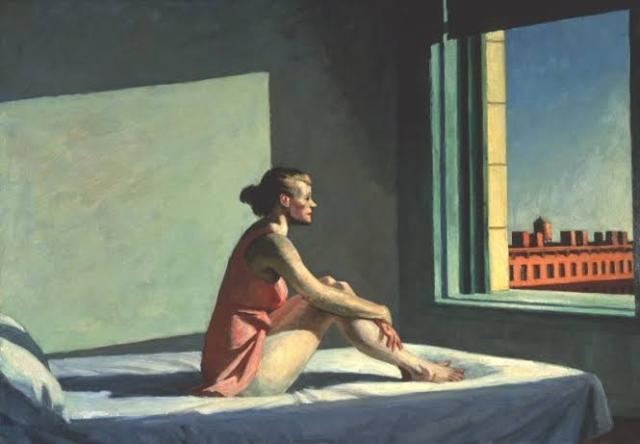


Edward Hopper was the master of portraying social realism through his paintings. It seems more than ever that we are all living in his paintings. His works depict urban isolation and loneliness. The subjects in his paintings, resemble all of us strongly at this time. He captures the mood of his subjects through deserted cityscapes and city streets that are supposed to be buzzing but instead heightens the loneliness feeling. The subjects are quite interesting, they are either looking out of a window or sitting idle, despairing the mortality of life and patiently looking for a hope to a better future. The juxtaposition ,between cities which are supposed to be hives of socialisation and their inner lives which is quite opposite, is a major theme in most of his works. The arrangement of colour schemes and silhouettes are also trying to portray this paradox. In these difficult times, his paintings integrated my inner feelings. Though his work is not focussed specifically on the circumstances we are dealing with, as for him city life can do the job of isolating people quite as well. In this sense, he is trying to show our capability to hide loneliness as a byproduct of our urban lives. This leads us to live a pseudo-social life as we are unable to convey our different aspects of loneliness.
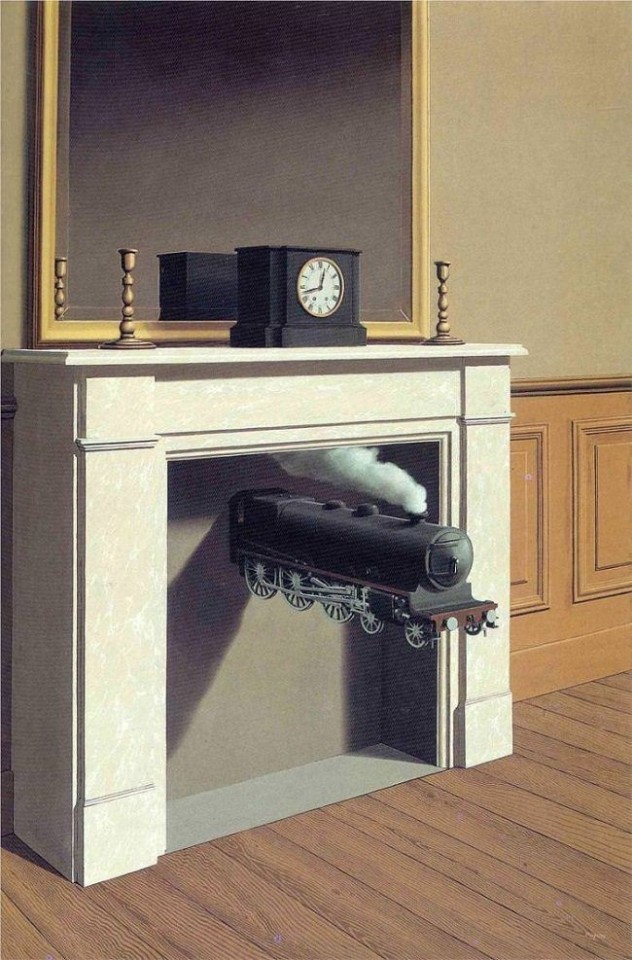
Time Transfixed by Reńe Magritte, 1938.
This painting took a hidden feeling of mine and brought it to light. Reńe Magritte’s Time transfixed talks to you like your imaginary friend(lets be honest guys) who knows you inside out and tells you harsh truths without ever judging you. Looking at the painting, our attention goes straight to the locomotive charging out of fireplace. It disturbs the mundanity of the scene and took us by surprise. The painting also emphasizes the clock placed over the fireplace in front of a mirror and in between two candles. Through the combonation of these odd objects, Magritte captures our vacillated and lost selves. The one which yearns to be a part of the crowd, to get emotional fulfilment socially. But at a certain point, wants to be left alone with his/her gloomy thoughts. The picture seems like a real motion event in which the locomotive may charge through the fireplace at any moment and disturbs the placidity of the room. But at the time It is stopped. It enters our consciousness and urges us to think about our banal but hidden feeling. It tries to redeem those moments when you are unwelcome and do not want any intrusion of any kind even after having many friends. It also depicts our desire to capture and eternalise delightful moments with someone before they become memories. This is the level of contradiction this picture tries to capture. The reflection of left candlestick is visible, but it’s not the same for right one. This represents our two contrasting feelings. We carry this dilemma our whole lives and in the way we get misunderstood by people. Its quite interesting how Magritte uses locomotive and clock to bring these feelings to the surface, but only through these candles we see their faces. The mirror does not reflect the rest of the room and tries to focus our attention to these candles. Every object carries a sense of purpose, it only depends on the viewer to extract these purposes. This painting assures us about the normality of our feelings and tells us its not our fault.

Norman Rockwell, Girl Running with Wet Canvas, 1930.

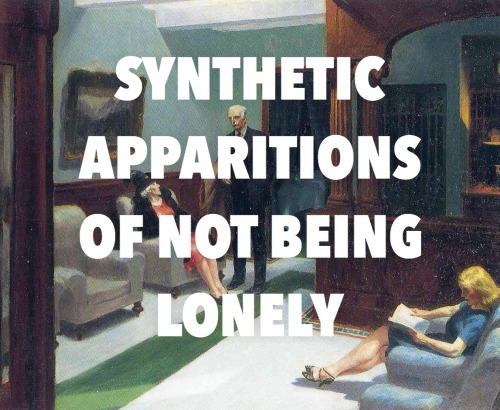


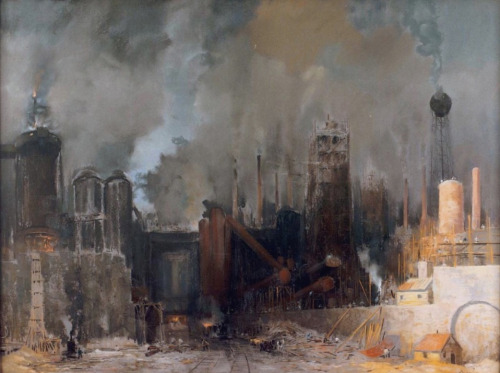
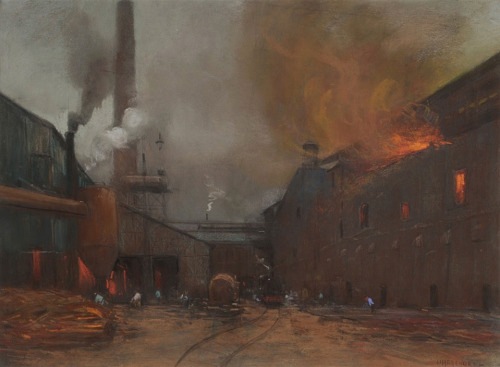

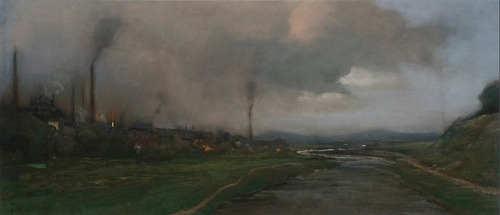

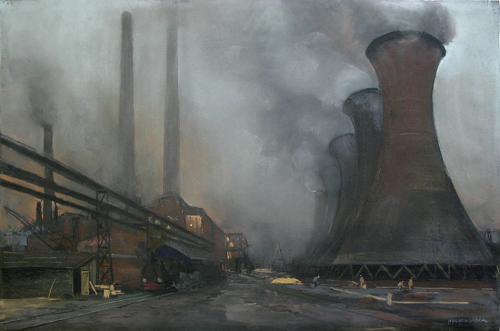
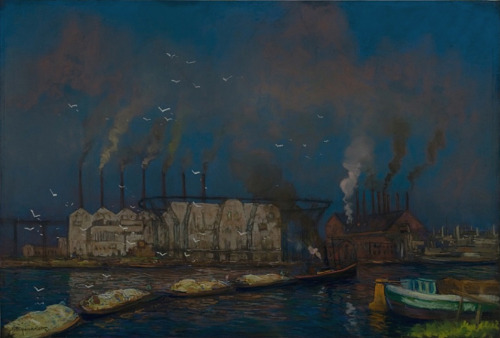






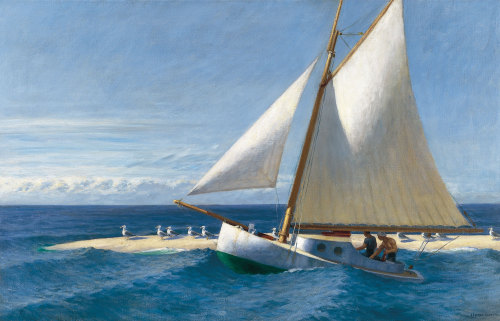
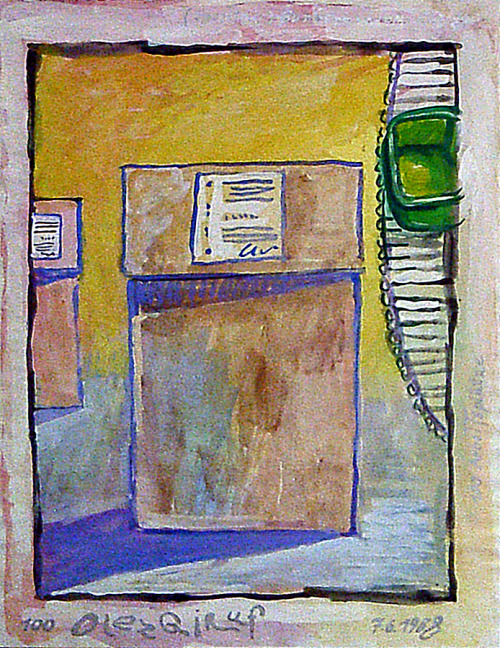


![निल बट्टे सन्नाटा (Nil Battey Sannata) [The New Classmate] (Ashwiny Iyer Tiwari - 2015) निल बट्टे सन्नाटा (Nil Battey Sannata) [The New Classmate] (Ashwiny Iyer Tiwari - 2015)](https://64.media.tumblr.com/4f15b8c9e91a36d0a78c187f0033f471/a55f9468210786d8-89/s500x750/de692f917379cd6875e9b69f2202c65170c53c0b.jpg)
![निल बट्टे सन्नाटा (Nil Battey Sannata) [The New Classmate] (Ashwiny Iyer Tiwari - 2015) निल बट्टे सन्नाटा (Nil Battey Sannata) [The New Classmate] (Ashwiny Iyer Tiwari - 2015)](https://64.media.tumblr.com/4440c19d5ae8eaf104531eba8fe2660d/a55f9468210786d8-cd/s500x750/c87e46f4a6458e886062d683cfecd59125b73d9b.jpg)
![निल बट्टे सन्नाटा (Nil Battey Sannata) [The New Classmate] (Ashwiny Iyer Tiwari - 2015) निल बट्टे सन्नाटा (Nil Battey Sannata) [The New Classmate] (Ashwiny Iyer Tiwari - 2015)](https://64.media.tumblr.com/79f194c47768324b20180063c68db1e2/a55f9468210786d8-82/s500x750/bd381fb65183aaebbaacaa16935fad3aed670708.jpg)
